Archives Hub feature for October 2015
Browse all descriptions relating to the Antarctic on the Archives Hub.
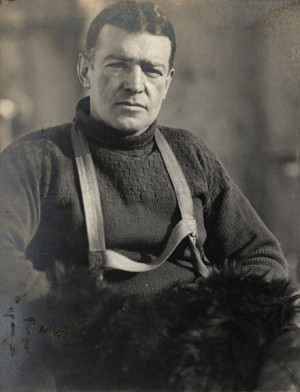
On the 27th October 1915 Antarctic expedition ship Endurance was abandoned on the orders of Sir Ernest Shackleton. The ship had been stuck in the ice since 18th January at the mercy of the currents of the Weddell Sea. The ship sank on 21 November leaving the men thousands of miles from home and Shackleton’s dream of being the first to cross the Antarctic continent via the South Pole in tatters.
The Endurance had sailed from England just as war was declared in August 1914, Shackleton had offered the ship and her crew to to the Admiralty but the response was that the expedition should proceed as planned. Sailing via Madeira and Buenos Aires the Endurance made her final port of call at the whaling stations of South Georgia.
Sir Ernest Shackleton, the expedition leader was no stranger to the Antarctic; he had been a member of Captain Scott’s first expedition in 1901-04 before leading his own expedition in 1907-09. That second expedition had seen him come to within 100 miles of the South Pole before making the difficult decision to turn back rather than risk the lives of his men further. In the intervening years the Norwegian Roald Amundsen had led the first team to reach the pole in 1911 and Captain Scott and his companions had perished on their own return journey in 1912.
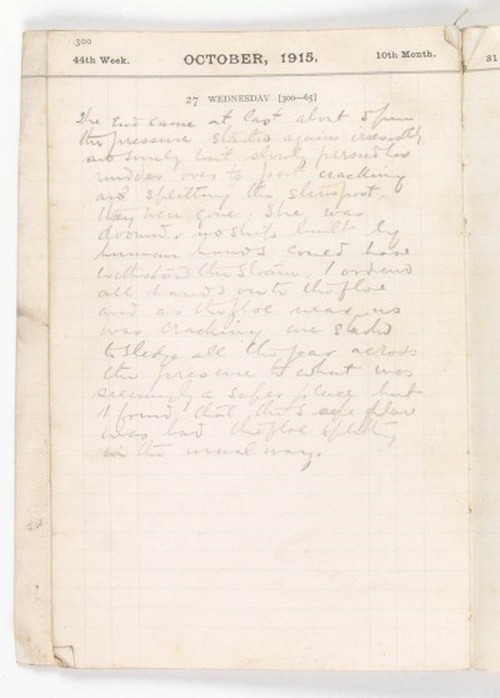
Shackleton’s plan was to land a party of men, dogs and supplies on the Weddell Sea side of the continent and travel across uncharted territory to the South Pole. Here he would then follow Captain Scott’s journey before picking up the route he had taken back in 1908 to reach the Ross Sea. While he was making his attempt from a second party would lay depots of food and fuel across the Ross Ice Shelf towards the pole along that route for his crossing party to pick up.
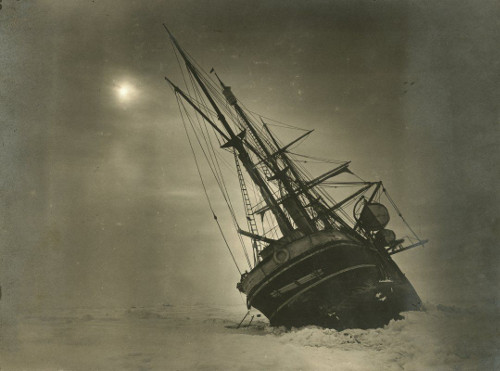
When the Endurance was crushed in the ice of the Weddell Sea the expedition changed from one of exploration to one of survival. The men camped on the sea ice, from October 1915 through to April 1916. When the ice broke up around them they took to the three small lifeboats and spent a week at sea before reaching Elephant Island, their first dry land since leaving South Georgia. This uninhabited island was only a temporary salvation. With no means of contacting the outside world the expedition had to save themselves.
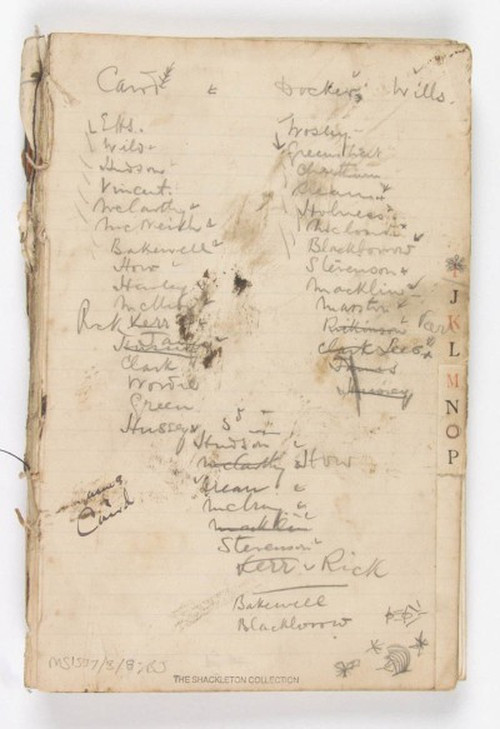
Shackleton’s lifeboat crew list. SPRI MS 1537/3/8.
Sheltering under the upturned hulls of two of the boats the majority of the crew lived on the Island for five months. Meanwhile Shackleton and a five man crew sailed across the southern ocean in the third boat – the James Caird – to South Georgia. Shackleton, Worsley and Crean were then forced to undertake a 36 hour walk across the uncharted island to raise the alarm. The three walked into the Stromness whaling station on the 20th May 1916. It took four attempts to rescue the men left behind on Elephant Island, all of whom were successfully rescued in August 1916.
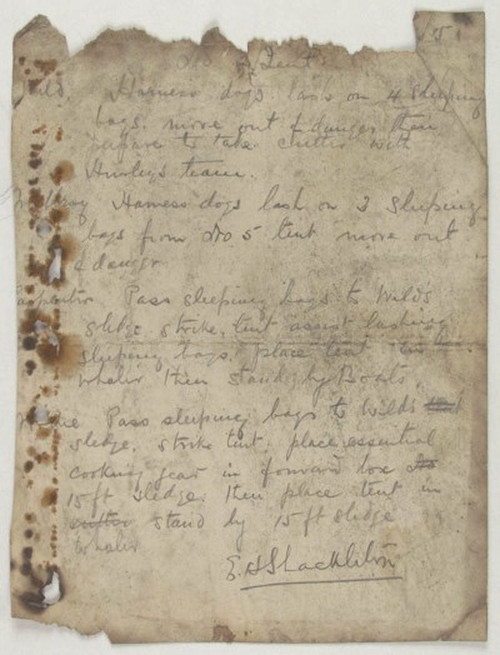
Throughout the expedition Shackleton and his men kept up their diaries. These precious volumes were preserved when so much was abandoned with the ship. Writing in pencil, sometimes on scraps of paper sewn together, the diaries provide the personal account of what the men went through.
Miss Naomi Boneham
Archives
The Thomas H Manning Polar Archives
Scott Polar Research Institute
University of Cambridge
Related
Sir Ernest Henry Shackleton collection on the Archives Hub:
http://archiveshub.ac.uk/data/gb15-sirernesthenryshackleton
Browse other collections of the Scott Polar Research Institute, University of Cambridge on the Archives Hub.
All images copyright the Scott Polar Research Institute, University of Cambridge, and reproduced with the kind permission of the copyright holder.
